The festive season is upon us once again! Here's what you can expect to be served during the Christmas season in Norway.
One of the things that fascinated me most about moving to a new country is the food and drink culture.
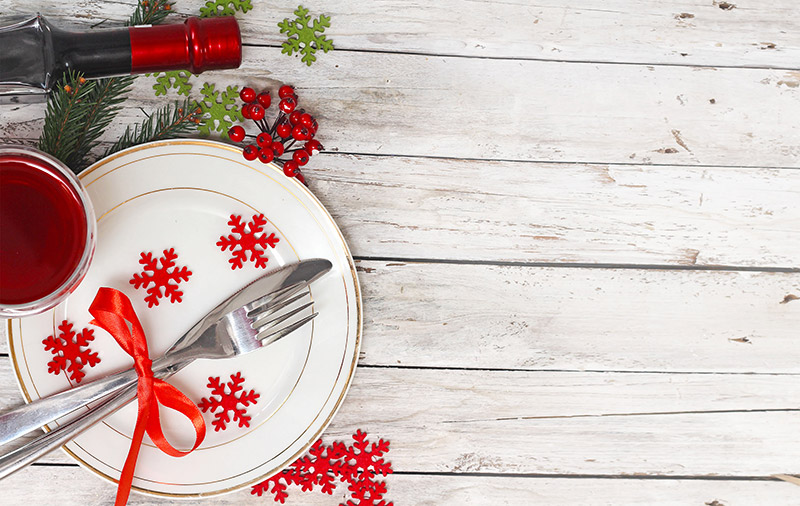
I don't just mean the actual food that's eaten, but the culture around it. There's no better time of the year to study these differences than at Christmas.
As with many countries at this time of year, food and drink are an important part of Norwegian Christmas traditions. That goes for the whole month of December too, and not just on Christmas Eve.
For the main meal, the English tend to eat turkey. Americans veer towards ham, roast beef, or goose. But Norwegians have totally different traditions for their Christmas dinner. Things are also quite different when it comes to the food and drink eaten throughout the season.
Table of Contents
Festive food traditions in Norway
I grew up in the UK celebrating on the 25th December. I know some of you reading this will have done so, too.
But here in Norway, the focal point of the celebration is very much the evening of the 24th December. Gifts are exchanged and the family gathers together for the main Christmas meal. Christmas Day itself is a much quieter affair.
But what do Norwegians eat on Christmas Eve? It actually varies quite a lot, typically along regional lines and family traditions.
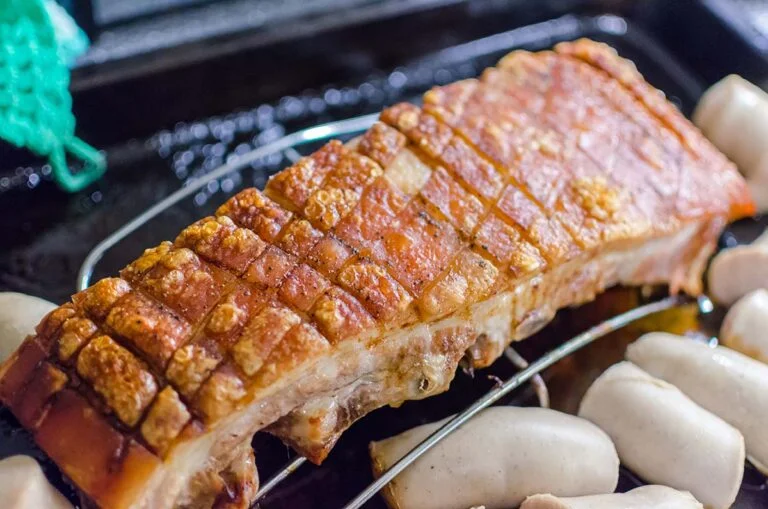
The most common popular dish Christmas Eve dish is ribbe, or seasoned pork belly. It's usually served with sauerkraut and redcurrant sauce. Pinekjøtt (dried sheep) is popular in the western counties, as is cod or other fresh fish. More on these later!
While Christmas Eve is the main meal for Norwegians, there's plenty more opportunities for festive food. That's thanks to the Norwegian julebord. Yep, the good old fashioned Christmas party!
Every company, school, sports club and social group hold their own julebord, meaning Norwegians often attend at least one during late November or December.
These gatherings are an important part of Norwegian culture. Traditional food is usually served along with large amounts of alcohol. Whereas Norwegians normally dress casually, the julebord is one of the rare occasions when they dress up in formal attire. If you're about to attend your first julebord, don't show up in jeans!
Now, let's take a look at the food and drink in much more detail. I hope you're hungry!
Ribbe
The most popular Norwegian Christmas Eve dish, ribbe is eaten by more than half of Norwegians on the big day. Whichever style of cut is used, a serving of ribbe always includes the crispy rind.
Ribbe is served with sweet and sour sides. Typically these are sauerkraut, red cabbage and/or sprouts. Christmas sausages, cranberry sauce, fried apple slices with honey are other common accompaniments.
The sauce can be anything from a regular brown gravy to one flavoured with cranberry, juniper, red wine, or many other possibilities.
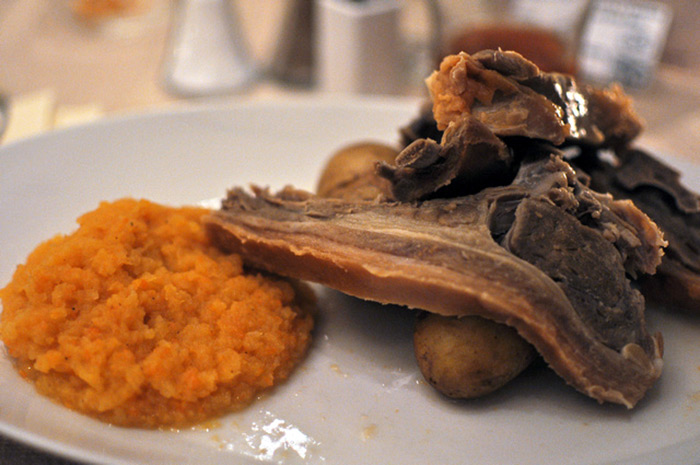
Pinnekjøtt
Pinnekjøtt translates literally into English as ‘stick meat.' The dried and salted sheep ribs have long been a traditional Christmas dish in the western counties, but can now be found all over Norway.
Up to 70% of Norwegians eat pinnekjøtt at some point over the festive season.
Although it's known to come from western Norway, the precise origin of the dish is unclear. Some believe the name comes from the birch sticks used in the traditional recipe for steaming the ribs. However, preparation methods vary. Some boil them, some roast them or even cook them over coals.
Cod
Especially popular in coastal communities, cod takes third place for the main Christmas Eve dish. It's important that freshly-caught cod is used, and served with simple accompaniments. Most commonly, those are boiled potatoes, carrots and a white sauce.
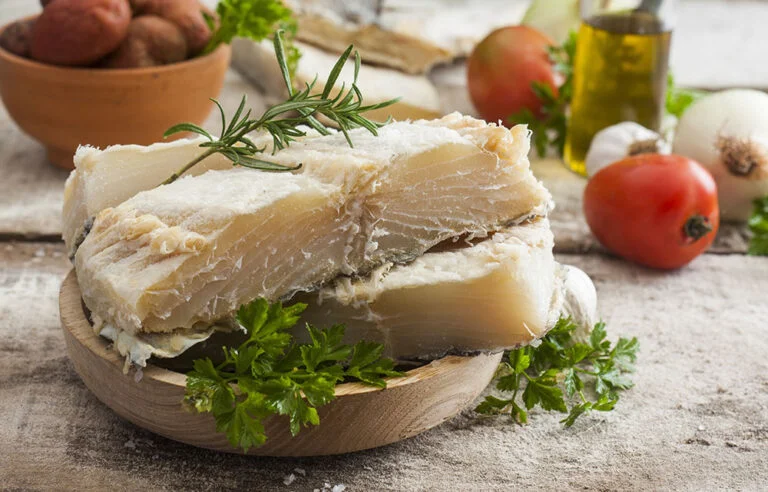
Lutefisk
The dish that splits opinion more than any other on this list! Although heavily associated with Christmas (especially in Norwegian American communities), lutefisk is more commonly eaten in the two months leading up to Christmas rather than as the main Christmas meal.
That being said, in some Norwegian homes you will absolutely find lutefisk on Christmas Eve!
According to forskning.no, lutefisk has been a common Christmas dish for a lot longer than people realise. It was eaten on Catholic holidays as long ago as the mid-16th-century.
Christmas porridge
Grøt, or Norwegian rice porridge, is a common dish thoughout the year. Julegrøt is the festive version! Recipes vary wildly but will usually include festive touches such as cinnamon, raisins or cranberries. Here's one example recipe that uses wholegrain rice.
Christmas cookies and cakes
Have you ever heard of the seven sorts? Christmas cookies are an important part of any Norwegian Christmas celebration.
Ranging from shortbread to gingerbread and everything in between, the name comes from the seven traditional choices that should be offered in a home over the festive period.
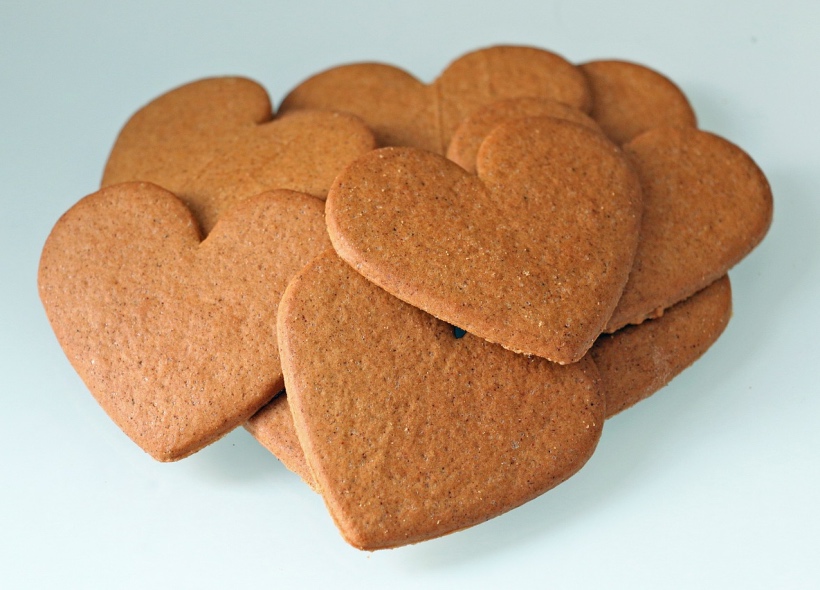
The problem is, no one's quite sure what those seven are! There are actually around twenty common types made around Christmas time.
Perhaps the most commonly available is the pepperkake, a crispy gingerbread cookie pictured above. These extremely more-ish bites are heavily publicised in Norwegian supermarkets in the two months prior to Christmas. They also tend to be super cheap. Bonus!
Another popular variety is the krumkake, a thin waffle cookie rolled into a cone and often filled with whipped cream. Sirupsnipper (syrup snaps) are similar to pepperkaker but much sweeter, diamond-shaped, and with an almond baked in to the centre.
Christmas drinks in Norway
In the run-up to the festive period, most breweries release batches of juleøl. These are Christmas versions of their beers, most usually darker and spicier than their regular brews. For those who don't drink alcohol, more and more breweries are producing non-alcoholic versions of their juleøl.
Although if you don't drink, I'd recommend julebrus instead! Also produced by the breweries, julebrus is a sweet, red, cherry-flavoured soda loved by Norwegians young and old.
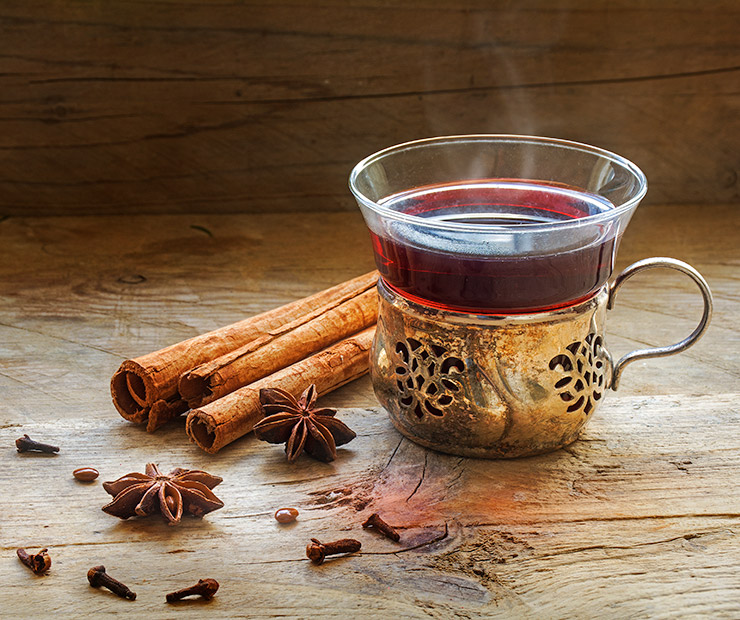
Gløgg is another popular drink in Norway, especially at Christmas markets throughout December. The Scandinavian take on mulled wine, gløgg is a hot red wine drink with added sugar or syrup and spices such as cinnamon. It's often served with raisins and almonds.
Vegetarian Christmas food in Norway
You may have noticed that Norwegian Christmas food tends to lean heavily towards meat and fish. That does mean that selections for vegetarians are often limited. If you don't have a problem with fish, you'll be fine.
Back in the UK, the traditional non-meat Christmas dish was always a nut roast. At least in my part of the country, anyway! I asked several Norwegians in the course of writing this article, and none of them could name an equivalent that is regularly served in Norway.
So, while there is probably going to be vegetarian food available during December, the exact dish will probably be a surprise!
What's your favourite Christmas food in Norway? If you don't live here, what would be on your on Christmas Eve table?



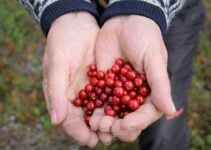


Lefse & Medisterdeig, cod fish ( Norwegian cod tastes so much better than any other cod fish), kranse kake, rice pudding & sutsuppe. But lefse is my favorite. My 2 yr. old granddaughter was so angry that we weren’t buying lefse in the store. Here Mexican tortillas are stacked up to buy, but not lefse.
I am from MN but spend the winters in FL! Lefse and Lutefisk are not to be found here in FL!
I ordered Lutefisk from Ingebretsen’s in Mpls. & Lefse from Countryside Bakery in WI!
God Jul!
We used to be able to buy fish balls in our local grocery store and they were sooooo good! I would drain them and brown them in butter. However, I can’t find them any more and people give me a weird look when I ask about them. Do you know if they are still available and where I might find them?
We haven’t had them for about 5 years!🤔 My mom would by cans when the visited Norway for years but she is gone now.😞
I love fiskabøls! I found them on the web last time I searched..I need to buy some more..I have had any in years😥. I miss my mom’s Ribbe though hers was more of a roast but we would beg for a piece of the crispy seasoned rind..I could literally eat my self sick I was blessed and was able to visit my Mor-Mor in Norway a few times and treasure those memories and all the wonderful food and drink…thank you for sharing.
My Norwegian Grandparents would always host Christmas Eve family feast. The main dish was oyster stew. Of course served with many other Norwegian Holiday foods. Lefse!
So how is the fish done in lutafisk ,here in MN its boiled and looks like jello i won’t touch it done up that way,is there any way to get cookie recipes for the holidays ?
My husband’s family is Norwegian and he steams our lutefisk in a steamer. We buy a frozen version from a Swedish market. He thaws it, then steams it and serves it with boiled potatoes, lefse, salt and pepper and PLENTY of melted butter over all. I add a lettuce salad for something green with texture. It is quite tasty that way, retains its shape and is not at all “gloopy” or gelatinous.
My mother, 100%Norwegian American, would start the Christmas Eve meal with oyster stew or fruit soup, with herring and crackers.Then we would move on to Swedish Meatballs, lease, some vegetable, with julekage and norwegian sugar cookies ( or rosettes, pepperkake, or sanbakkels).yum.
I meant lefse!
Very interesting! I would love a cookbook if you have one. My in-laws are Norwegian and I would love to cook something to surprise them!
I am from Oregon but my Father’s family is all Norwegian and came from Norway via Minnesota. Our family celebration was always at my great grandfather’s home. My grandmother and her 3 sisters would make lefsa on the wood burning stove while all 13 grandchildren would line up to get one of these delicious treats. The lefsa was spread with butter and sprinkled with sugar, then rolled and shared with all of us. As soon as we had one in our hands, it was back to the back of the line to get another one. It was quit an assembly line and I think it was my favorite part of Christmas.💜💜💜 Love and miss you, Grama
Thank you for sharing this memory. You were so lucky to have this. My great grandfather past before I was born and great grandmother when I was small. I have a memory of a Christmas dinner, which luttefisk centered, and her Siamese cat that forever ran away from us. She sang and spoke Norwegian but never enough, I loved listening to her. I miss her, a lot.
Has anyone heard of Hugletta (probably misspelled)? My mother used to make it and I can’t find a recipe anywhere. I know it was made with eggs and had a custard consistency.
I started learning Norwegian this year so I love reading about the culture and food. I can’t afford to travel there yet but I hope to someday
This was fun to read! My mother’s family came from Norway, but it’s enough generations back that the culture wasn’t handed down as far as me.
BTW, I think you’ve got England and the US conflated. Americans tend toward turkey or a Christmas ham, and some might do a roast if they read the fancy food magazines…but goose isn’t quite the thing here that it has been in the UK.
Tusen Takk for your great columns! Recently you mentioned the gingerbread display in Bergen and that there was also one in Duluth, MN. I was going to respond then and didn’t get it done. In Minneapolis(MN) Norway House has one also. This is the seventh year and draws over 15,000 people. It is wonderful and fun to see all the creative buildings that they bring in each year.
They are in the process of expanding the building and it will be known as the ‘Norwegian Center of America!’ Mindekirken Lutheran Memorial Church is also located there and they are celebrating their 100 years this year!
For Lauri – Hagletta. Simmer 1 gallon of whole milk til reduced by half, about 2 hours. Beat two eggs, then beat in 2 cups buttermilk, 1 and 1/2 cups sugar, good dadh salt. Slowly stir into simmering milk. Cook a minute or two til it clabbers.
Yes, my Grandmother cooked this.
My paternal grandmother was Norwegian. Loved making Kringla cookies with her. Loved Kumla too. Miss those days.
My Swedish grandmother always made Lefse for her Norwegian husband and our Swedish/Norwegian family. No Christmas was complete without it. I have such wonderful memories of our love affair with that food, but never made it myself. I can taste it just by thinking about it!
Every year at St. Olaf, I would dutifully attempt to eat Lutefisk. I mean, I would really try to eat the stuff. And every year, I would go back for the Swedish meatballs. Unfortunately, Lutefisk tastes like fish jello, which is NOT my idea of a lovely Christmas dinner.
I remember having Pinne Kjøtt as a child in Bergen as well as Fiske Boller. My dad would steam the Pinne Kjøtt ove birch sticks. I didn’t encounter Lutte Fisk till we came to Chicago, and all the Norwegian clubs would have it at Christmas. Folks either loved it or hated it. I couldn’t eat it. Legend has it that half the immigrants who left Norway did so to get away from Lute Fisk, only to find it again in the Norwegian American clubs in the States.